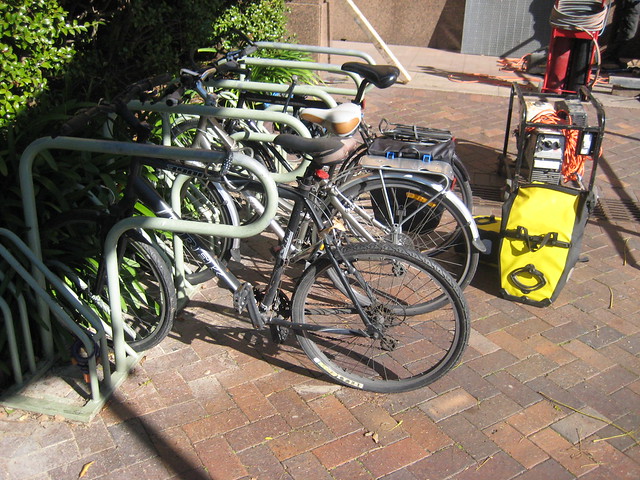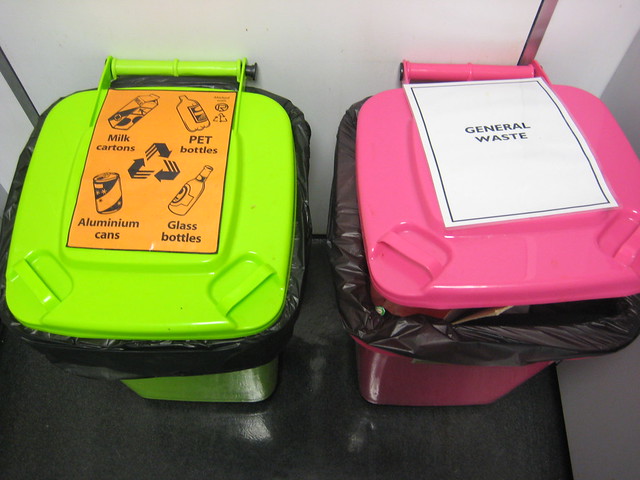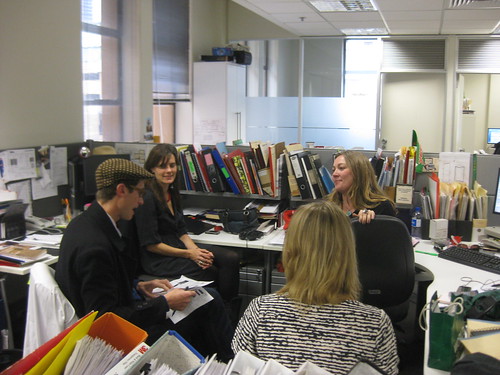On Tuesday arvo I made a foray down into the third floor exhibition space, which is full of building materials, tools and preparators working hard to get the galleries ready for the exhibition.
Since there’s only a week and a bit to go before the opening, I guess I wanted to hear from the folks who set things up. How do they feel about the processes and wastes that surround their jobs?
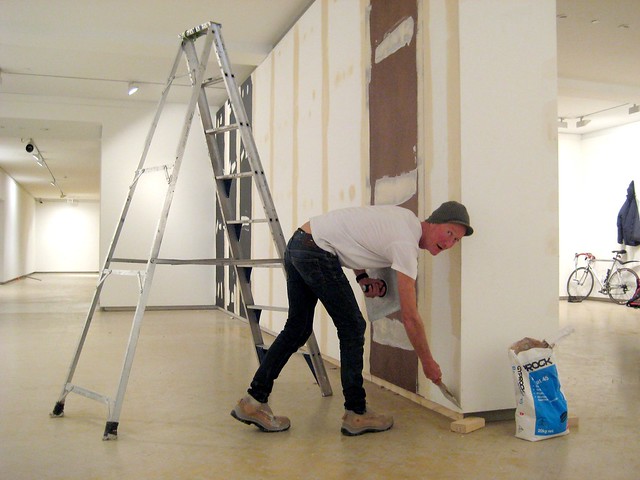
Here’s Jay. He’s been working for the MCA for over a decade – originally as an employee, and now as an external contractor who comes in to custom-build walls for specific exhibitions.
What I like about this photo (besides Jay’s cheeky glance, and his precious bike parked in the background) is that it shows the wall he has built at what I think is its most beautiful moment.
Jay is in the process of applying “mud” – a kind of bulk plaster-spakfiller used to smooth the gaps between the sheets of chipboard which make up the wall, rendering it flawlessly smooth.
Once this “mud” has been sanded back, and it’s had two or three coats of white paint applied to it, the wall effectively disappears. But right now, the wall reveals its labour, its craft. Its pure rectilinearity can be tangibly appreciated as a direct result of human ingenuity and skill.
Aesthetically, it’s a satisfying object in its own right.
But this moment is fleeting. The eventual invisibility of these custom-walls is, in a way, one of the MCA’s great claims to fame. The museum “creates spaces” to best house the artworks which are in each show. And I know from experience (as I too, like Jay, have spent some years installing art here) that the artists whose works are exhibited in these spaces are very appreciative of the attention which is bestowed on “getting it right”.
But how much chipboard, aluminium stud and track, pine two-by-four, mud, undercoat and topcoat paint is used in “getting it right”? And is it worth it?
Continue reading →

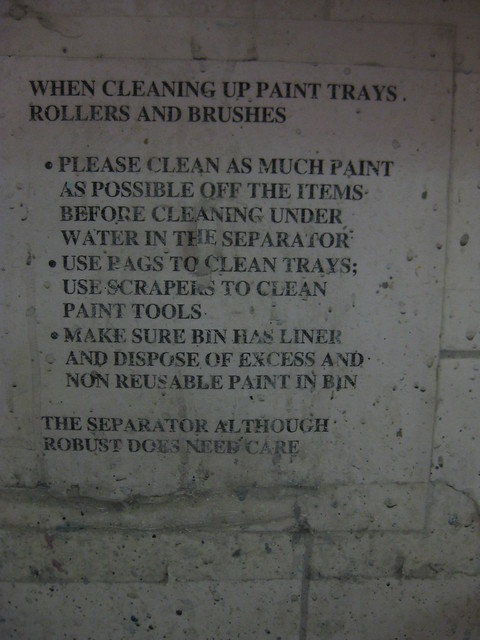
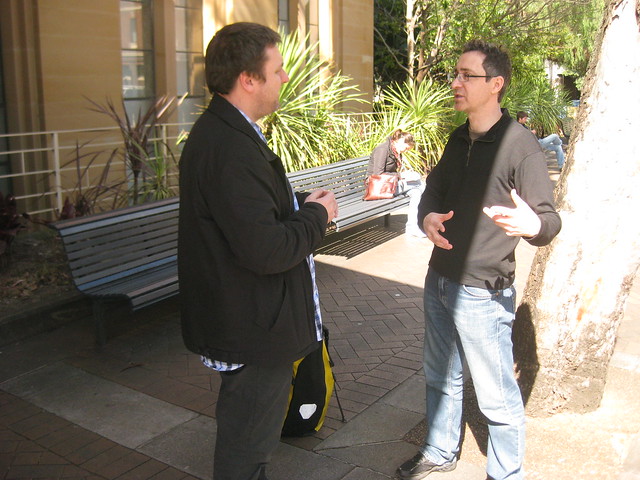
 Glenn: We should give staff and museum visitors the option to walk up the stairs during the exhibition. (Currently, floors 3-6 of the MCA can only be accessed by the lift – how much power does this use per journey? More homework for me…)
Glenn: We should give staff and museum visitors the option to walk up the stairs during the exhibition. (Currently, floors 3-6 of the MCA can only be accessed by the lift – how much power does this use per journey? More homework for me…)
